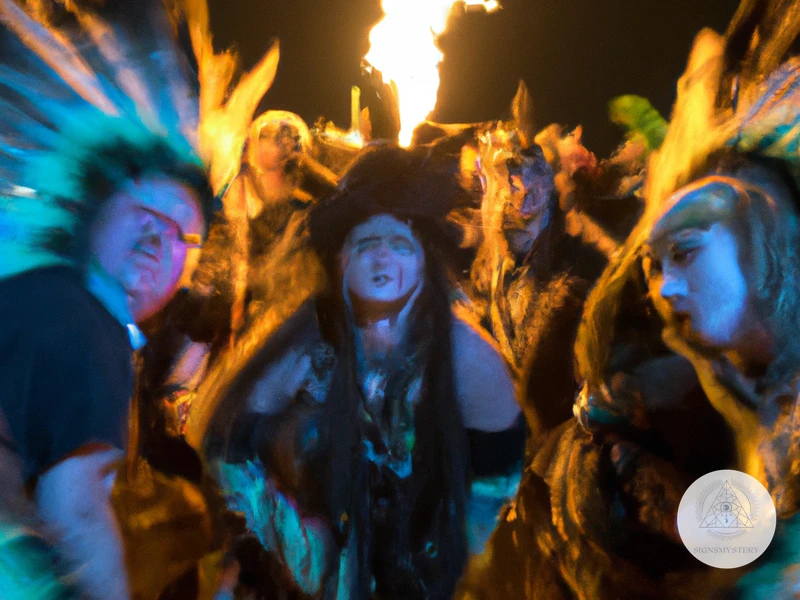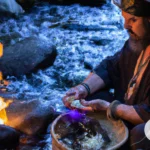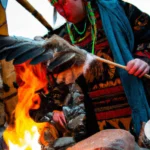Trance is a powerful tool utilized in shamanic rituals throughout the world. It unlocks the ability for the shaman to access higher states of being, connect with the spirit world, and achieve healing. But what is the science behind this mystical experience? In this article, we delve into the art and science of trance, unraveling its neurological basis and debunking myths surrounding its use. From there, we explore the importance of trance in shamanic practices, the various techniques utilized by shamans to achieve trance states, and the benefits and potential pitfalls of trance work. Join us as we unveil the mysteries of trance and gain a deeper understanding of its potent power.
The Art and Science of Trance
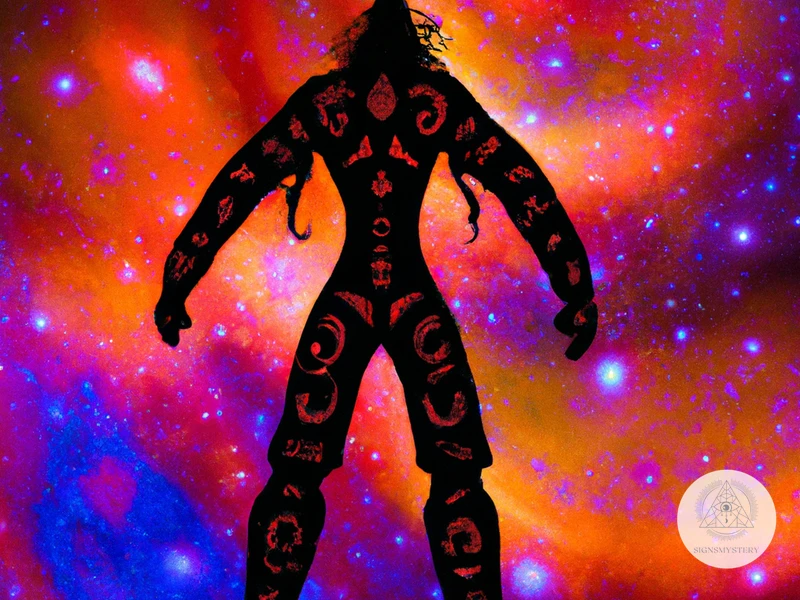
Trance is an ancient practice that has been used for centuries across various cultures and religions, both as a tool for spiritual growth and a therapeutic method. Understanding the science and art behind trance is crucial in unlocking its power. Scientists have extensively studied trance and have identified the neurological basis of trance-hypnotic states. Trance creates a shift in consciousness that allows people to enter a deep state of relaxation that stimulates the release of serotonin and endorphins. These chemicals produce feelings of euphoria and promote healing. Trance is also an important part of shamanic practices, where it plays a crucial role in connecting individuals to the spiritual world. To achieve a trance state, shamans use various techniques like drumming, chanting, and dancing, which alter brainwave frequencies and facilitate access to altered states of consciousness. It is important to approach trance work with care, setting clear intentions, selecting qualified practitioners, and addressing potential risks. To learn more about shamanic trance techniques, check out drumming and rattling, music and chanting, and plant medicines and psychedelics.
Understanding Trance
Understanding Trance: Trance is an altered state of consciousness where the individual experiences heightened awareness and a deep inward focus. In this state, the person is still conscious but is able to disconnect from the external environment and access their subconscious mind. Trance can be induced through various methods, such as meditation, hypnosis, and shamanic practices. It is important to note that trance is a natural and common phenomenon, experienced by everyone to some degree. Trance is not a form of possession or mind control, but rather an innate ability of the human mind to shift into different states of awareness.
Trance is characterized by a variety of subjective experiences, such as a sense of timelessness, distortions in perceptions of self and external reality, and vivid mental imagery. Trance can be a deeply spiritual experience that allows the individual to access their innermost thoughts and emotions and bring about healing and transformation. However, it can also be a challenging and overwhelming experience for some individuals.
To minimize the risk of negative side effects, it is important to undergo a proper pre-ritual purification, set clear intentions, and work with a qualified shamanic practitioner. Understanding the nature of trance and how it can be induced is crucial for maximizing its potential benefits and minimizing its risks. Trance can be an integral part of shamanic rituals, and its importance cannot be overstated. In the next sections, we will explore the role of trance in shamanism, the different types of trance states, and various techniques used to induce trance.
The Neurological Basis of Trance-hypnotic States
The neurological basis of trance-hypnotic states has been the subject of scientific investigation for several decades now. Studies have shown that there are significant changes in brain activity that occur during trance states induced by various techniques.
One of the key findings is that the brain waves of individuals in a trance state are different from those of individuals in a normal waking state. For instance, electroencephalogram (EEG) readings taken from volunteers have shown that alpha and theta waves are more dominant in a trance state. Alpha waves are associated with a relaxed, meditative state while theta waves are linked to deep relaxation, creativity, and dreaming.
The limbic system, a set of brain regions responsible for emotional processing and regulation, also appears to be highly active during trance states. This heightened activity, along with the activation of the reward pathways in the brain during trance, helps to explain the intense feelings of euphoria, well-being, and spiritual connection that practitioners report.
Recent research suggests that trance states can also lead to changes in the nervous system that promote immunological and cardiovascular health. This finding might help to explain why shamanic rituals have been used historically to promote healing.
It is essential to note that trance states should only be induced in safe and controlled conditions. These states are powerful and can lead to intense emotional and physical experiences. When induced in a supportive context with a qualified practitioner, trance states can be a beneficial aspect of shamanic practices.
Understanding the neurological basis of trance-hypnotic states can help us better appreciate the power of shamanic rituals and their effects on human health and well-being. Despite this progress in the scientific field, we must remember that the spiritual aspects of shamanism must be included to understand trance fully.
Debunking Myths Related to Trance
Trance is often misunderstood and comes with numerous myths that need to be debunked. One such myth is that trance is an altered state of consciousness where individuals lose control of their thoughts and actions. This is untrue. While in trance, individuals remain in control of their thoughts and actions, and they can end the trance state at any given time.
Another common myth is that trance is similar to being asleep or unconscious. This is also false. Trance is a heightened state of awareness, not a state of unconsciousness. Trance can enhance perception, intuition, and creativity.
Some claim that only shamans or spiritual leaders can enter a trance state. This is not true. Anyone, regardless of their religious or spiritual background, can enter into a trance state through various techniques, as long as they are performed safely and correctly.
Trance is also sometimes associated with hallucinations or delusions. However, these are not inherent qualities of the trance state. In fact, experiencing these symptoms during a trance state may indicate an underlying mental health condition that should be addressed.
Finally, it’s important to note that trance is not a magical cure-all or a shortcut to spiritual enlightenment. It should not be approached with the expectation of instant gratification or instant solutions. Trance can be a powerful tool for personal growth and spiritual exploration, but it should be approached with respect and caution.
Debunking these myths allows people to better understand the true nature of trance. It is a valuable technique that can be used to explore the unconscious mind, connect with the spiritual realm, and promote personal growth and healing. As with any form of spiritual practice, proper education and caution are essential.
The Importance of Trance in Shamanism
In shamanism, trance is an essential tool that enables practitioners to connect with the spiritual realm, communicate with spirits, and gain insight and wisdom. Trance is a state of consciousness that allows the shaman to access altered states of consciousness and embark on healing journeys or vision quests. It is believed that during this altered state, the shaman’s consciousness expands beyond the physical body, leading to a heightened awareness that grants access to other realms of existence. Trance is a fundamental aspect of shamanic practices, and it is achieved through various techniques, including drumming, chanting, plant medicines, among others. The benefits of trance work in shamanism are numerous, including healing, insight, and clarity. However, it is essential to approach trance work with caution, work with a skilled shaman, and address potential negative side effects.
What is Shamanism
What is Shamanism?
Shamanism is a spiritual practice that dates back thousands of years, spanning across numerous cultures and regions. At its core, Shamanism is a practice focused on connecting with the spiritual realm. Shamans, individuals who practice Shamanism, believe that everything in the universe has a spirit, including plants, animals, and even rocks.
Shamans are intermediaries between the spiritual and physical realms, working to restore balance and harmony between the two. Shamanism is not a religion, but rather a way of life that is centered around the belief in the interconnectedness of all things.
Shamanic cultures have unique rituals and ceremonies that allow for Shamanic journeys and communication with the spiritual realm. These rituals and ceremonies often involve the use of hallucinogenic substances, chanting, dancing, and divination tools such as tarot cards or crystal balls.
In traditional Shamanic cultures, Shamans were responsible for healing ailments, providing counsel, and facilitating communication with the spirit world. Today, Shamanism continues to be practiced in many parts of the world and is recognized as a valuable source of healing and spirituality.
If you want to learn more about Shamanism, you can explore topics such as Shamanic healing practices, the Four Directions in Shamanism, the use of fire and smoke in Shamanic rituals, divination tools in Shaman ceremonies, and the importance of the Shamanic altar in ceremonies.
The Role of Trance in Shamanic Practices
Trance is an integral part of shamanic practices. It is considered as a means of communicating with the spirit world, where shamans seek guidance, healing, and knowledge.
Connecting with Spirits: Shamans believe that during trance, they can enter an altered state of consciousness that allows them to connect with spirits. These spirits can provide them with guidance, healing, and knowledge. Shamans use different trance techniques to enter this state of consciousness, such as drumming, chanting, and dancing.
Healing: One of the primary roles of trance in shamanic practices is healing. Shamans believe that illnesses and diseases can have spiritual origins. By entering trance, shamans can communicate with the spirit of the afflicted person and identify the root cause of the illness. The shaman then works with the spirit world to help bring healing to the individual.
Divination and Prophesy: Trance also plays a vital role in divination and prophesy. Shamans enter trance to receive messages, visions, or insights about the future. They believe that during trance, they can access hidden information that is not accessible through ordinary consciousness.
Empowerment: Trance can also be used for personal empowerment. Shamans believe that by entering trance, they can discover their true selves and awaken their potential. Trance can facilitate personal growth and transformation, allowing the individual to tap into their inner resources and achieve their goals.
Anchoring: Shamans use trance to anchor certain qualities and attributes to an individual or group. For instance, during a ceremony focused on courage, the shaman may help the individual or group anchor that quality to themselves, allowing them to access it more easily in the future.
Trance plays a significant role in shamanic practices, providing the means to communicate with spirits, facilitating healing, accessing hidden information, promoting personal growth, and anchoring qualities in individuals or groups.
To learn more about shamanic practices, visit our page on shamanic altar ceremonies.
The Different Types of Trance in Shamanism
Shamanism has been practiced for centuries, and the use of trance is an integral part of its rituals. There are different types of trance in shamanism, and each one has its own unique characteristics and benefits.
One type of trance commonly used in shamanic practices is the ecstatic trance. This type of trance is induced by repetitive drumming, chanting, and dancing. The goal of ecstatic trance is to facilitate connection with the spirit world and to achieve a state of euphoria.
Another type of trance used in shamanism is conversational trance. In this type of trance, the shaman engages in conversation with spirits, entities, or ancestors, acting as a mediator between the worlds of the living and the dead. Conversational trance is often used for divination, counseling, and problem-solving.
Yet another type of trance in shamanism is possession trance. In this type of trance, the shaman allows a spirit or entity to enter their body and speak or act through them. Possession trance is considered a powerful tool for healing and spiritual growth, as it allows the person to experience a different perspective and gain insights that are not available in ordinary consciousness.
Lastly, there is a type of trance called dream trance. This type of trance is induced through lucid dreaming or meditation. Dream trance is often used for exploring the subconscious, gaining clarity, and accessing hidden knowledge or wisdom.
It’s important to note that not all shamanic practices involve trance, and not all trance experiences are positive or beneficial. That’s why it’s crucial to work with a qualified shamanic practitioner who can guide you through the process and help you navigate any potential risks.
Trance Techniques in Shamanism
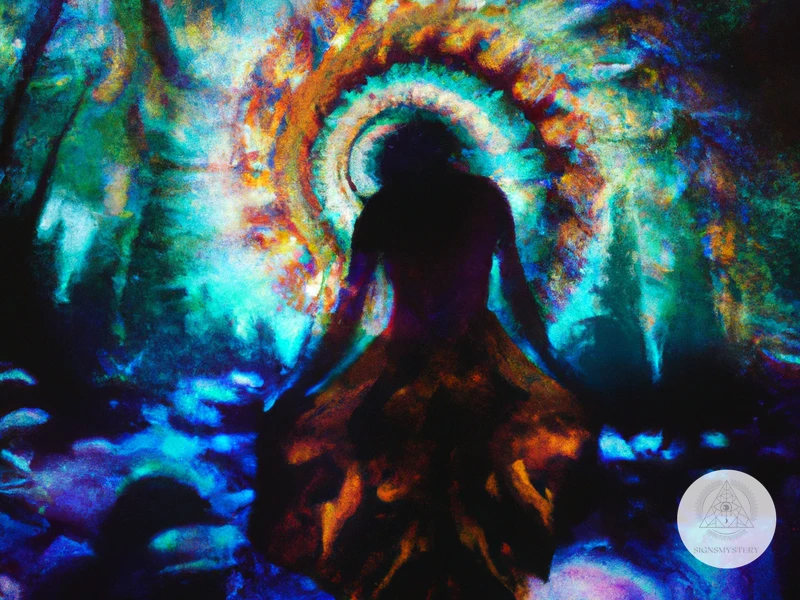
Trance techniques are the backbone of shamanic rituals. The techniques used in shamanism are designed to induce altered states of consciousness that are necessary for accessing different realms of consciousness and engaging with spirit beings. Drumming and rattling are two of the most common techniques used. These two techniques are used in combination with chanting and singing to provide a synchronized rhythm to the ceremony. Dancing and movement are also used to induce trance states. These are especially important in some cultures where the dance is used to connect with the spirit world. Plant medicines and psychedelics are also used in some shamanic cultures to achieve an altered state of consciousness. These substances are usually ingested in a ritual setting and under the guidance of an experienced shaman.
Drumming and Rattling
are two of the most commonly used trance techniques in shamanic rituals. They are used to induce altered states of consciousness and facilitate the shaman’s journey into the spirit world.
Drumming involves the use of a drum, usually a large frame drum, that is played with a steady rhythm for an extended period of time. The sound vibrations produced by the drum help to alter the brainwaves of the shaman, shifting them into a more relaxed and receptive state of mind. This allows the shaman to access deeper levels of consciousness and connect more easily with the spirit realm.
Rattling is similar to drumming in that it also produces rhythmic sound vibrations. However, instead of a drum, the shaman uses a rattle. A rattle is a small instrument that is typically made from a hollowed-out gourd, wood, or bone. It is filled with small objects such as seeds, beads, or pebbles which create a shaking sound when the rattle is moved.
Both drumming and rattling can be used individually or in combination with each other. Different rhythms and patterns can be used to achieve different effects. For example, a slow and steady beat might be used to induce relaxation and calmness, while a faster and more intense rhythm might be used to facilitate journeying and visioning.
One of the benefits of using drumming and rattling is that they are relatively safe and non-invasive. They do not involve the use of any external substances and can be used by anyone regardless of age or physical health.
However, it is important to note that drumming and rattling should always be performed by a qualified shamanic practitioner who has received proper training and guidance. This is because improper use of these techniques can potentially lead to negative side effects such as disorientation, confusion, and anxiety.
To ensure safe and effective use of drumming and rattling in shamanic rituals, it is important to work with a qualified practitioner who can guide you through the process and help you set clear intentions for your journey.
Dancing and Movement
Dancing and movement are essential components of shamanic rituals that induce trance states. Through dance and movement, the shamanic practitioner can enter into an altered state of consciousness, which enables them to access the spiritual realm. Different cultures have their unique styles of dance and movements, which often reflect the geography, environment, and cosmology of the region.
Here are some of the dance and movement techniques used in shamanic rituals:
| Dance Techniques | Description |
|---|---|
| Ecstatic Dance | This involves free-form movement to rhythmic beats and music, with no particular style or structured dance routine. |
| Trance Dance | This dance technique involves repetitive movements to the beat of the drum, which induces trance states in practitioners. |
| Spiral Dance | As the name suggests, this dance technique involves circular and spiral movements, symbolizing the cyclical nature of life and the universe. |
| Masked Dance | This dance technique involves wearing masks and enacting stories and myths of the tribe or culture, often accompanied by music and chanting. |
With these dance techniques, the shamanic practitioner can connect with the energies of the earth and cosmos, release emotional blockages, and access the spiritual realm. In addition to dance, movement can also induce trance states in shamanic rituals.
Here are some examples of movement techniques used in shamanic rituals:
- Yoga: This involves slow and deliberate movements, synchronized with breath, to enhance physical and mental relaxation and focus.
- Tai Chi: Similar to yoga, Tai Chi involves slow and coordinated movements that aim to balance the flow of energy (or Qi) in the body.
- Martial Arts: Certain styles of martial arts, such as capoeira or kung fu, involve fluid and dynamic movements that can induce trance states.
Dance and movement are powerful techniques that enable the shamanic practitioner to access higher states of consciousness, connect with spiritual energies, and achieve healing and transformation. By incorporating dance and movement into shamanic rituals, practitioners can embark on a journey of self-discovery and personal empowerment.
Chanting and Singing
Chanting and singing are powerful trance techniques that have been used in shamanic practices for centuries. Shamanic communities all over the world use chanting and singing to achieve altered states of consciousness and connect with the spirit world. Chanting and singing can be done alone or in groups, and can involve simple or complex melodies, rhythmic patterns, and harmonies.
One of the main benefits of chanting and singing is the way in which they induce a state of trance. Similar to drumming and rattling, chanting and singing can slow down brain waves and induce a relaxed, meditative state. This can help to reduce stress and anxiety, making it easier to enter trance and connect with the spiritual realm.
Chanting and singing can facilitate communication with spirits and other non-human entities. Some shamanic traditions use specific songs or chants to call upon spirits and invite them to participate in the ceremony. The rhythm and melody of the songs can help to establish a connection with the spirit world, allowing for messages to be received and transmitted.
Chanting and singing can also be used to channel healing energy or power. In some shamanic practices, a shaman or group of shamans will chant or sing over a person who is in need of healing. The intense focus and energy of the chanting can act as a conduit for healing energy, which is then directed towards the person in need.
However, it is important to note that chanting and singing, like any other trance technique, should be used with caution and respect. It is recommended that individuals seek the guidance of an experienced shamanic practitioner before attempting to use chanting and singing as a means of inducing trance. This is particularly important if plant medicines or other psychoactive substances are being used in conjunction with chanting and singing.
Chanting and singing are powerful tools for inducing trance and connecting with the spirit world in shamanic practices. While they have many benefits, they should be approached with respect and caution, and individuals should seek appropriate guidance before attempting to use them to achieve altered states of consciousness.
Plant Medicines and Psychedelics
Plants have been used in shamanic rituals for thousands of years. Some of these plants are known to produce psychoactive effects and are commonly referred to as plant medicines or psychedelics. The use of these plants is believed to help facilitate altered states of consciousness and deepen spiritual experiences.
Ayahuasca: Ayahuasca is a plant medicine commonly used in shamanic rituals in South America. It contains a powerful hallucinogen called DMT, which is known to produce intense visual and auditory experiences. Ayahuasca is believed to facilitate deep emotional and spiritual healing and is often used during healing ceremonies.
Peyote: Peyote is a small cactus that grows in the southwestern United States and Mexico. It contains a psychoactive compound called mescaline, which is known to produce intense hallucinations, altered
Subscribe to Our Newsletter
Sign up to receive the latest news and updates.
Psilocybin Mushrooms: Psilocybin mushrooms contain a psychoactive compound called psilocybin, which is known to produce profound spiritual experiences. They have been used in shamanic rituals for centuries and are believed to help individuals connect with the divine and gain a deeper understanding of themselves and the world around them.
San Pedro: San Pedro is a cactus found in the Andean mountains of South America. It contains mescaline, the same psychoactive compound found in Peyote. San Pedro has been used in shamanic rituals for thousands of years and is believed to facilitate spiritual growth and connection with the divine.
Iboga: Iboga is a plant native to Central Africa. It contains a psychoactive compound called ibogaine, which is known to induce profound spiritual experiences. Iboga has been used in Bwiti religious ceremonies for centuries and is believed to help individuals connect with their ancestors and gain insight into their lives.
It is worth noting that while plant medicines and psychedelics can be powerful tools for spiritual growth and healing, they should only be used under the guidance of an experienced shamanic practitioner. The improper use of these plants can lead to negative side effects and potential risks. It is important to approach plant medicine work with respect, caution, and a clear intention for healing and growth.
The Benefits of Trance in Shamanic Rituals
Trance is an important tool used in shamanic rituals and it holds numerous benefits for those who engage in it. One of the key benefits of trance is the ability to facilitate profound levels of healing and transformation. When an individual enters a trance state, they become more open and receptive to their inner world, allowing for the resolution of deeply rooted emotional and psychological issues. Additionally, trance facilitates a deeper connection to the spirit world and can provide a greater understanding of one’s life purpose and direction. Trance can also lead to a sense of empowerment and clarity, enabling individuals to make more intentional choices and live in a more authentic way. However, it is important to approach trance work with caution and select a qualified shamanic practitioner to avoid potential negative side effects.
Healing and Transformation
One of the most significant and widely recognized benefits of trance work in shamanism is its potential for healing and transformation. Trance states offer a pathway to accessing the deeper layers of the mind, where unresolved traumas, emotional blockages, and self-limiting beliefs reside.
Through techniques such as drumming, dancing, chanting, or the use of plant medicines, shamans guide practitioners into a trance state where they can connect with their inner selves and begin to work with these deeper aspects of their being. By bypassing the conscious mind, practitioners can access these unconscious patterns and release them from their grasp.
As a result, practitioners often report profound healing experiences, including physical and emotional healing, increased self-awareness and empathy, and a greater sense of inner peace and wholeness. With the release of these negative patterns, practitioners can experience a transformation in their lives and create new, more positive patterns that serve their highest good.
However, it should be noted that not all healing experiences occur immediately or without effort. Sometimes, healing can require continued work and patience, but the rewards can be life-changing. The healing power of trance work in shamanism is a testament to the incredible potential of the human mind and its ability to heal itself when given the proper tools and guidance.
Connecting with the Spirit World
Connecting with the Spirit World is one of the most significant benefits of trance work in Shamanic rituals. Trance states can help individuals access different dimensions of reality, including the spiritual world, and communicate with spirit guides, ancestral spirits, and power animals.
Shamans believe that everything in existence is imbued with spirit, including animals, plants, and natural elements like mountains, rivers, and oceans. When in trance, individuals can connect with the spirits of these entities, learn from them, and seek their help in healing and transformation.
Shamanic journeys are one of the ways to connect with the Spirit World. During these journeys, the shaman or the individual in trance travels to different realms of consciousness and meets spirit entities. The experience is often vivid and interactive, with the spirits offering guidance, wisdom, and healing.
In addition to journeys, trance states can also facilitate communication with spirits through divination tools like tarot cards, pendulums, or sacred stones. The shaman or the individual in trance uses the tool to receive messages from the Spirit World, interpret signs, and gain insight into different aspects of their lives.
Connecting with the Spirit World can bring a sense of wonder, awe, and humility that can deepen one’s spirituality and connection with the natural world. It can also help individuals gain a better understanding of their purpose, path, and mission in life and receive guidance for making important decisions.
However, it is important to approach the Spirit World with respect and caution. Shamans emphasize the importance of building a strong relationship with spirit allies, maintaining clear intentions, and following ethical principles when working with spirits.
Connecting with the Spirit World is a powerful and transformative benefit of trance work in Shamanic rituals. It can provide individuals with guidance, insight, and healing from the spirits of the natural world and deepen their connection with the spiritual dimension of existence.
Empowerment and Clarity
Empowerment and clarity are two of the most significant benefits of trance work in shamanism. In a state of trance, individuals can access their innermost selves, which can lead to a greater sense of self-awareness and a deeper understanding of one’s life purpose. This understanding can lead to a greater sense of empowerment.
During trance work, individuals may also receive clarity about confusing or challenging experiences in their life. The shamanic journey can provide insight into difficult situations, leading to a greater understanding of oneself and the world.
Trance work can also help individuals connect with their own inner guidance. This connection can lead to a greater sense of intuition and decision-making abilities. The heightened sense of awareness that comes from trance work can lead to a better understanding of the choices that need to be made in order to live a happier, more fulfilling life.
Trance work can help individuals release negative emotions and find a sense of peace. Many people find that they are able to release pent-up anger, fear, and sadness during trance work. This emotional release can be cathartic, allowing individuals to move forward with greater clarity and a greater sense of inner peace.
Empowerment and clarity are significant benefits of trance work in shamanism. The state of trance can lead to a greater sense of self-awareness, inner guidance, and emotional release. These benefits can create a greater understanding of oneself and the world, leading to a more fulfilling life.
Pitfalls and Precautions in Trance Work
Trance work in shamanic rituals holds exceptional potential for healing and growth, but it’s essential to take precautions to ensure a safe and effective experience. Setting clear intentions is vital to avoid getting lost in the depths of subconsciousness. The expertise and qualifications of the shamanic practitioner are crucial in safely navigating psycho-spiritual realms. It’s important to address potential risks and negative side effects before going into trance. A thorough medical checkup can help avoid complications that may arise from physical or mental illnesses. It’s also essential to pay attention to any contraindications with medications or addictive substances. Finally, remember that the benefits of trance come from the work done after the ceremony, so it’s vital to integrate and process the experience with care and intentionality.
Setting Clear Intentions
Setting clear intentions is essential when engaging in trance work during shamanic rituals. It is important to know what you hope to achieve, and to let go of any distractions or intrusive thoughts. The process of setting intentions begins with deep reflection and introspection. Take the time to identify the areas of your life that need healing or transformation.
Once you have set your intentions, it is important to communicate them to your shamanic practitioner, if present. They can assist you in choosing the appropriate method of trance induction, and guide you throughout the process. Keep in mind that the more focused and specific your intentions are, the more effective the trance work will be.
When setting intentions, it is also important to be realistic and patient. The effects of trance work may not be immediately apparent, and may require multiple sessions to achieve your desired outcome. Be open to the unexpected and trust in the process.
Lastly, it is important to take the time to ground yourself after trance work. This can be done through meditation, journaling, or simply spending time in nature. Grounding helps to integrate the experiences and insights gained during the trance work, and can aid in the manifestation of your intentions in everyday life.
By setting clear intentions, you can ensure a safe and transformative experience during trance work in shamanic rituals. Remember to communicate your intentions, be patient and realistic, and take the time to ground yourself afterwards for optimal results.
Selecting a Qualified Shamanic Practitioner
When it comes to selecting a qualified Shamanic Practitioner, it is crucial to do proper research to ensure a safe and effective experience. Here are some essential factors to consider:
Educational Background and Training: Look for practitioners who have undergone formal training and have experience in the field. They should be familiar with the tools and techniques of shamanic healing and be well-versed in shamanic history and culture.
Professionalism and Integrity: A good shamanic practitioner should always maintain professionalism and integrity. Look for practitioners who are transparent about their practices, fees, and expertise. Avoid those who make unrealistic claims, offer questionable “cures,” or create dependency on their services.
Experience and Feedback: Check for the practitioner’s experience, reputation, and feedback from former clients. You may ask them for references or check online reviews and ratings.
Compatibility and Connection: It is important to develop compatibility and connection with the practitioner to ensure a comfortable and effective experience. The practitioner should have excellent interpersonal skills, be empathetic, and non-judgmental.
Location and Accessibility: Consider proximity and accessibility when selecting a practitioner. Choose someone who can meet you in person or offer remote sessions if needed.
Selecting a qualified shamanic practitioner is a critical step towards having a safe and empowering trance experience. Take the time to research and choose wisely, and remember that the practitioner’s role is to facilitate your own healing journey.
Addressing Potential Risks and Negative Side Effects
Addressing Potential Risks and Negative Side Effects:
When it comes to working with trance in shamanic rituals, there are potential risks and negative side effects that should be addressed to promote safe practices and minimize harm.
Physical Risks: Certain trance techniques, such as long periods of dancing or the use of plant medicines, can be physically demanding and may put strain on the body, leading to injuries or exhaustion. It’s important to train and prepare properly beforehand and to take breaks when needed to avoid physical harm.
Psychological Risks: While trance can have many benefits, it can also bring up difficult emotions, memories, and trauma that may need to be worked through with the help of a qualified shamanic practitioner or therapist. It’s important to address these potential psychological risks before engaging in any trance work.
Spiritual Risks: In some cultures, it is believed that certain spirits or entities may try to attach themselves to individuals during trance work. While this is a belief system that may not be shared by all, it’s important to acknowledge that there may be spiritual risks involved and to work with a qualified practitioner who has experience in safely navigating these types of situations.
Precautions: To avoid potential risks and negative side effects, it’s important to take certain precautions such as setting clear intentions before engaging in trance work, selecting a qualified shamanic practitioner who has experience in the specific type of trance work being done, and doing proper research on the potential risks involved in the specific technique being used.
By addressing potential risks and negative side effects, we can ensure that trance work in shamanic rituals is done safely and responsibly, allowing for maximal benefits and minimal harm.
Conclusion
To conclude, trance is an innate human ability that has been utilized for millennia by shamans and spiritual practitioners around the world. Through the use of various techniques such as drumming, dancing, chanting, and plant medicines, individuals can enter altered states of consciousness and connect with the spiritual realm.
While the power of trance in shamanic rituals is undeniable, it should not be taken lightly. It is important to approach trance work with clear intentions and to seek out qualified shamanic practitioners who can guide individuals safely through the process. Additionally, one should be aware of potential risks and negative side effects, and take the necessary precautions to minimize them.
The benefits of trance in shamanic rituals are numerous, including healing, transformation, and empowerment. By accessing the spiritual realm through trance, individuals can gain a deeper understanding of themselves and their place in the world.
In conclusion, the mysteries of trance may never be fully understood, but through continued exploration and practice, individuals can tap into its power and unlock its potential for spiritual growth and enlightenment.
Frequently Asked Questions
What is the Power of Trance in Shamanic Rituals?
The power of trance in shamanic rituals lies in its ability to connect individuals with their subconscious mind and the spiritual realm, allowing for transformative experiences and deep insight.
How Does Trance Work?
Trance is a state of consciousness where an individual’s attention is turned inward, allowing them to access deeper levels of awareness and tap into their subconscious mind. It can be induced through various techniques such as drumming, dancing, chanting, and meditation.
What is the Neurological Basis of Trance?
The neurological basis of trance is the activation of the parasympathetic nervous system, which slows down the heart rate, lowers blood pressure, and promotes relaxation and a sense of calm. This state of relaxation is what allows individuals to access deeper levels of consciousness.
Can Trance Be Dangerous?
While trance can be a powerful tool for personal growth and spiritual exploration, it can also be dangerous if practiced without proper guidance and preparation. It is essential to work with a qualified practitioner and have a clear intention before engaging in trance work.
What is Shamanism?
Shamanism is a spiritual practice that dates back thousands of years and is found in various cultures worldwide. It involves the use of trance and other techniques to access the spiritual realm and connect with the spiritual forces of the universe.
What is the Role of Trance in Shamanic Practices?
Trance is a central aspect of shamanic practices as it allows individuals to connect with the spiritual realm and communicate with spirits and ancestors. It also enhances the shaman’s ability to access and manipulate energy for healing and transformation.
What are the Different Types of Trance in Shamanism?
The different types of trance in shamanism include visionary trance, possession trance, and ecstasy trance. Each type of trance serves specific purposes in shamanic rituals and practices.
What Techniques are Used for Trance in Shamanism?
Some of the most commonly used techniques for inducing trance in shamanism include drumming and rattling, dancing and movement, chanting and singing, and the use of plant medicines and psychedelics.
What are the Benefits of Trance in Shamanic Rituals?
The benefits of trance in shamanic rituals include healing and transformation, connecting with the spirit world, empowerment, and clarity of vision and purpose.
What Precautions Should I Take Before Engaging in Trance Work?
It is essential to set clear intentions and work with a qualified shamanic practitioner who can guide you through the process of inducing and navigating a trance state. It is also important to be aware of the potential risks and negative side effects of trance work and address them accordingly.

